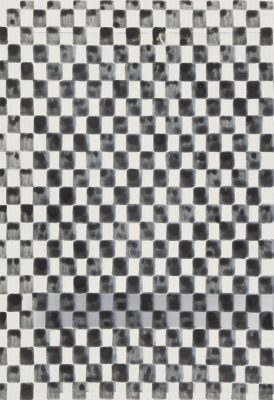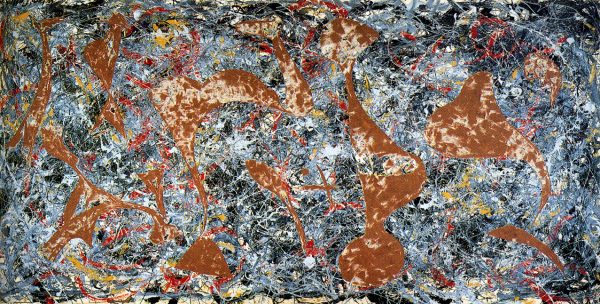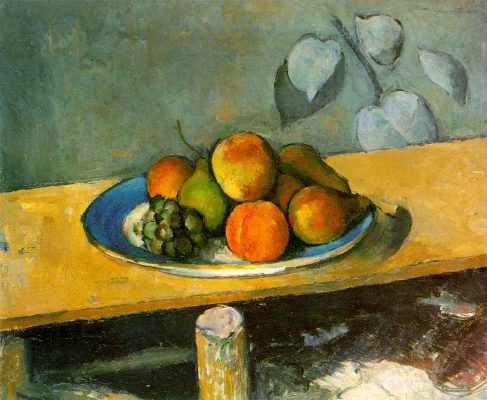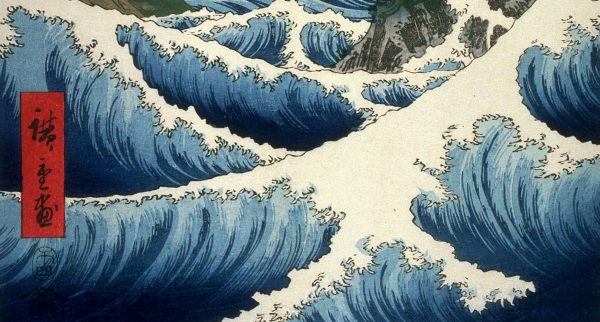‘We are poor passing facts / warned by that to give / each figure in the photograph / his living name,’ writes Robert Lowell. His poem ‘Epilogue’ is a lament at its writer’s inability ‘to make something imagined, not recalled’. Lowell desires the rich lucidity of a painter’s vision and instead finds himself armed only with a crude lens:
But sometimes everything I write
with the threadbare art of my eye
seems a snapshot,
lurid, rapid, garish, grouped,
heightened from life,
yet paralysed by fact.
Writing as painting, writing as photography — neither simile entirely fitting or true. ‘Books are not mirrors, and life doesn’t go onto the page like life, but like writing,’ wrote Lynne Tillman in her essay ‘The Last Words Are Andy Warhol’, collected in What Would Lynne Tillman Do?. In her new novel, Men and Apparitions, something similar is suggested of photography: photographs do not reflect life, they reflect photography — the medium and its mediations, both imagined and recalled. What this means is one of the central preoccupations of the book’s narrator, Ezekiel (Zeke) Stark, a 38-year-old East Coast American academic (or as he might say, ‘acadoomic’) ethnographer who studies ‘society through images, in words and pix, in how individuals see themselves, in past and present tenses, and with what they identify, which are also images.’
Zeke’s professional speciality is the family photograph album, and Men and Apparitions is both the story of Zeke’s own family and of the family, told through an album-like collage of portraits and snapshots, posed and impromptu, at once public and private, that move in and out of focus, collapse in stories shared and divergent: a twenty-first-century revision, perhaps, of Edward Steichen’s 1955 photography exhibition The Family of Man, one in which images are inherently self-conscious, complex and contradictory — just like the lives of those they depict, or in many cases, leave undeveloped. There is Zeke, the middle child of a middle-class suburban family, raised outside Boston (‘John Updike Territory. Nice. Family place, if you didn’t know the family. Kidding.’). There is Mother, an accomplished editor; Father, an alcoholic; Bro Hart, aggressive and disdainful older brother, who marries and divorces and remarries a woman who might be a CIA agent, but who is definitely an unpleasant person; and Little Sister, who is ‘selectively mute’, until she isn’t, at which point she becomes Tilda, and shortly thereafter, commits suicide. There is Aunt Clarissa, who believes that spirits are passed down through families, and that the essence of Marian ‘Clover’ Hooper Adams, wife of the Bostonian writer Henry Adams and an accomplished writer and photographer herself, is with the present-day Hooper Starks. Later, when Zeke is older, there is Maggie, his first love and then his wife and then his ex-wife, after she has an affair with his best friend, CW. There is Zeke, then, disoriented and alone, wandering through Europe attempting to make sense of what has happened: what was it that he didn’t, couldn’t see? What was congenitally outside of his frame? And there is a host of unnamed subjects, ‘Men in Quotes’, who answer questions about masculinity under the sign of second-wave feminism — these are Zeke’s notes from the field where he studies ‘the New Man’, in whom he may or may not recognise aspects of himself.
Alongside the fractured, fractious story of Zeke and his family, the narrator dispenses, particularly in the first half of the novel, clusters of aphoristic maxims about photography, ethnography, visual and cultural studies. These are similar in style and tone to some of Tillman’s other fictional protagonists — Madame Realism, The Translation Artist, Paige Turner — and, indeed, to her own non-fiction. As with these other voices who examine life from an explicit angle or vocation, in Men and Apparitions, Zeke’s intellectual asides serve multiple expositions, telescope through the text to comment simultaneously on character, form, content, narrative and writing — both concrete, within this novel, and abstract, as processes and possibilities.
‘Shooting stars serve us the way everything once served humanity, all for us, because solipsism goes a long way as consolation for human limitation.’ And, ‘True is not Truth, but also what is untrue or, let’s say, unprovable, is not a lie, not fallacious.’ Or, and in particular, ‘A photograph doesn’t speak. If it did it would be just another unreliable narrator.’ Zeke tells all the truth, and tells it slant. Or rather, the ‘all’ of the truth lies in the slantness of its telling — the obliques and cut-eye glances, the well-thumbed images and their blank abutting margins, the stuttering gutters of the family album as origin story gone awry. From the outset of his narrative, Zeke establishes himself firmly as an unreliable narrator:
The universe heaves with laughter, and I’m all about my lopsided, self-defining tale. How I came to be me, not you, how I’m shaping me for you, the way my posse and other native informants do for me, how I’m shape-shifting. I’m telling you that I’m telling you; my self is my field, and habitually I observe, and write field notes.
He knows that we know that he knows that we — and so on. But the cliché is not a mere conceit or a novelistic convenience: it is inhabited by Zeke, whose narrative lives self-consciously inside its broken possibilities. Zeke is always just half-tongue-in-cheek, sincerely insincere, delivering incisive, sometimes brutal, sad statements about his family and people in general with jokey, palliative rejoinders: Ha, Just kidding, Right, You feel me, Cool. ‘Ethnographer, study yourself. Ethnographer, heal yourself,’ he says, making light of his work. Zeke is able to cannily deconstruct the ways in which we rely on images, and a concomitant sense of stable identity, in order to function as human beings, as well as the ways in which the family re-tells itself through its self-made images, which are actual photographs but also inherited ideas that become images in the mind and memory. He knowingly references contemporary photographic practices that share artistic concerns with his ethnographic methodologies, works that question the (re/un)making of worlds through images — Carrie Mae Weems, Stephen Shore, Barbara Kruger, Cindy Sherman, Zoe Leonard, Christopher Williams, Louise Lawler, Sherrie Levine, Liz Deschenes, Gregory Crewdson, Roni Horn and Barbara Ess, amongst many others. There is a glut of information on every page of Men and Apparitions, but always the sense — ethnographer, heal yourself — that something is missing, is wrong, has vanished — and that we wait for it to reappear, aware it may never have existed.
Zeke understands that photographs, and their attendant narratives, are not representational objects; but he also knows that we want them to be so, and that this desire creates images as real as they are false. Even his own interests, the study of what he calls ‘the rejectamenta’ — discarded family albums — cedes comically to narrative impulses, the feeling that in everything collected is something connected:
‘I became familiar with the family, and had the urge to name each person, each character in this silent album. I felt each deserved a name, was a character in this unwritten novel. James Clifford and others talk about ethnography as writing, even as fiction. I’d call this novel Anon.
The Bible started like this. Kidding.’
Or maybe not kidding. ‘We are poor passing facts’, and if there isn’t anything in the photograph, that doesn’t mean there isn’t something behind, under, beside, nearby, or next to it. ‘The mind does that,’ writes William Gass of intuitive connections in On Being Blue: ‘A single word, a single thought, a single thing, as Plato taught. We cover our concepts, like fish, with clouds of net […] We catch them and connect. Imagined origins reduce the sound of clash and contradiction.’ Even as the notion of family unravels completely, Zeke returns again and again to images of his childhood, and pulls at distant genealogies to make sense of his present predilections and predicaments. Sometimes what is missing is that which cannot be expressly conveyed or pictured, only intuited — what reaches and stretches through time: inheritance, affinity, desire, trauma, loss, other word- and image-less silences.
An image, according to Zeke, is ‘a concoction, often manufactured, meant to create a way to be seen, viewed, understood.’ An image is discrete, but not complete or entire; it summons, but cannot make manifest. It has this in common with Tillman’s writing in general, and the way in which she crafts the narrative lines of Men and Apparitions: details are proffered in order to skilfully evade, to generate a different kind of detail, which might be called negative, but never empty, space. Narratives like photographs — words like images — are partial and partisan, engaged in complex interplay. One must always ask, as Zeke does — ‘WHAT IS THERE?’ and ‘DO YOU GET THE PICTURE? DOES THE PICTURE GET YOU? (Bears repeating).’
Early in the novel, Zeke quotes Samuel Beckett, ‘All art is the same — an attempt to fill empty space.’ ‘I spent, spend, hours, weeks, months from my young life on, with pictures,’ he continues, ‘absorbed by their mysteriousness, there yet not there.’ That there is something fundamentally mysterious to the photograph, and to all images, runs through the entirety of Men and Apparitions, red threads that pull on one of the novel’s epigraphs: ‘Mystery is a great embarrassment to the modern mind.’ The quotation comes from Flannery O’Connor’s ‘The Teaching of Literature,’ and is in fact quoted only in part: read in full, the phrase is preceded by a prefatory clause — ‘It is the business of fiction to embody mystery through manners, and mystery is a great embarrassment to the modern mind.’ In Men and Apparitions, as in much of Tillman’s work, it is the business of fiction, but also of other forms and media, to embody mystery. In ‘Stories Tell Stories’, an essay about the artist Joan Jonas, Tillman invokes the same O’Connor quotation to describe the artist’s work, further elaborating:
She looks at human mystery, the murky stuff of life, not for the love of obscurity or ambiguity. Her art also doesn’t demystify. In that unpredictable wilderness, gnarly feelings can separate from motives or goals, people come and go, strange things happen without beginnings, and events don’t have discernible endings. There are no absolutes or inevitable conclusions. More important, there may be no need of them. Jonas’s great project says, in so many ways and approaches: There is no great embarrassment in not knowing.
And Tillman’s great project, too. In Men and Apparitions, photography is both machine and magic. Zeke speaks of spirit photography and refers to the artist Susan Hiller, whose interest in photography and the ‘aura’ collapses the supernatural with the scientific (Hiller’s Homage to Marcel Duchamp: Auras adorns the cover of the book). Photography, like all it captures and manufactures — subject, identity, self — hovers somewhere between fact and apparition. Tillman renders Zeke’s life and work via the endlessly reproducible but never entirely stable — images and language. To not know, to reject demystification as auras multiply and diffuse, is to embrace what Zeke describes as the inenarrable, that which is incapable of being narrated.
‘Surface is depth, when nothing is superficial,’ states Zeke, which might also be read as the guiding principle of Men and Apparitions, its structure, rhythm and pace. As a reading experience, this can have wild effects — Zeke’s mind is agile, funny, stylish, but follows its own interior logic, moving quickly through complex knots of ideas and references that start where he is interested, and stop when he is no longer. Portraits of family members, intimate and distant, come and go rapidly, like the memories they are; and plot is thin, if not non-existent, for long stretches. The mind skitters maddeningly, looking for some consistent (read linear, sustained) narrative to hold onto. But once you absorb this logic, accept the novel’s other epigraph — ‘We must learn to be surprised’, Rabbi Abraham Heschel — a different mode of reading emerges, one in which this seemingly scattered form becomes a natural extension of its content. Moreover, under the profusion of surface signs and symbols can be heard a thick layer of silence — fear, maybe, loneliness, definitely. Zeke is witty, wise and proficient; but he is also deeply alone, fumbling and grasping — even when (especially when) employing his clearly outlined methodologies to gather evidence and information, carefully guarding against personal bias.
Reading Men and Apparitions, I thought of many things. I thought of J. D. Salinger and his Glass family, all of whom narrate their stories with the same offhanded, articulate intelligence as Zeke, funny and wry, but missing something — their parents, the dead eldest brother, a childhood. I thought of the photographer Philip Steinmetz and his work about family photo albums, a six-volume sociological ‘portrait’ of himself and his relatives, in which he and his family members both are and are not themselves. The completed piece is called Somebody’s Making a Mistake. I thought about when my mother showed me a photograph of her as a child, holding a bunny rabbit, which my grandmother had taken to make her feel better after some upset. It was special, she told me, because in those days film was expensive and so there were no candid moments. But more than anything, I thought about loneliness and love — how present these absences, how absent these presences can be. We can never see, we can never feel that they are real enough.
In the final section of the novel, Zeke’s field study entitled ‘Men in Quotes’, he describes himself in the field, observing couples on a typical Friday night, as he stands on a corner from 7 p.m. to midnight. One night, a woman screams at a man as he walks away from her: ‘YOU HAVE TO CARE ABOUT ME. YOU HAVE TO CARE ABOUT ME.’
‘Isn’t that it, isn’t that it, isn’t that it,’ Zeke wonders, ‘what we all want. And what I felt, and never said aloud.’ After Maggie, Zeke decides that he will never love again in the same way, and decides to transfer his love — or a form of it — to his ancestor, Clover Adams. But there are no clear photographs of Clover, who killed herself by swallowing photographic chemicals; her face is always partially obscured. And anyway, an image, no matter what you believe you understand of it, will never love you back.
As a child, one of Zeke’s best friends is a praying mantis, named Mr Petey, who lives in the backyard. Zeke admires Mr Petey’s ability to be invisible, just as he is astonished by the way clouds take the shapes they do: ‘that they had volume but were made of air, of space,’ he says, ‘that killed me.’ A nod, perhaps, to the stark but ethereal photographic skies of Minor White, or to Alfred Stieglitz’s Equivalents — a near decade-long series of clouds as abstractions, images in themselves. Image comes from the Latin imago, which in psychology is an idealised concept of a loved one, formed in childhood and retained unaltered in adult life. It is also, in entomology, the final developmental stage of an insect after undergoing metamorphosis. Plural, imagines. No, an image, nor a word, will never love you back. But you can use it to make something that might convey this very fact; an image in itself that someone else, conversely, may love, in all its mystery and manners.




